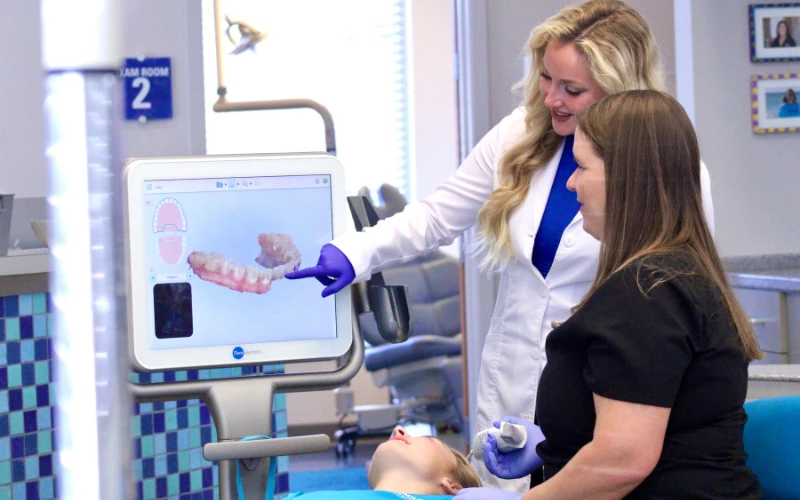
Orthodontic treatment has come a long way over the years, evolving from traditional braces to more modern options such as Invisalign. Braces have been the go-to solution for straightening teeth and correcting bite issues for decades. They consist of metal brackets that are glued to the teeth and connected by wires, which are adjusted periodically to shift the teeth into the desired position. While braces have been effective in treating a wide range of orthodontic problems, they do come with some drawbacks. They can be uncomfortable to wear, may cause irritation to the mouth, and can be quite noticeable, which can be a concern for many patients, especially teenagers.
Enter Invisalign, a revolutionary alternative to traditional braces that has transformed the field of orthodontics. Invisalign uses a series of clear, removable aligners that are custom-made to fit over the teeth. These aligners are virtually invisible when worn, making them a popular choice among adults and teenagers who are looking for a more discreet option for straightening their teeth. Invisalign aligners are also removable, which means that they can be taken out for eating, brushing, and flossing, making it easier to maintain good oral hygiene during orthodontic treatment. This is a significant advantage over traditional braces, which can make oral hygiene more challenging due to the brackets and wires that can trap food and plaque.
One of the key factors in the evolution of orthodontic treatment from braces to Invisalign is the advancements in technology. Invisalign utilizes 3D imaging technology to create a digital model of the patient's teeth, which is used to custom-design the aligners for each stage of the treatment process. This precision allows for more accurate and efficient tooth movements, leading to shorter treatment times compared to traditional braces. In addition, the digital model allows the patient to see a virtual representation of how their teeth will move throughout the treatment, giving them a better understanding of the process and the expected outcome.
Another advantage of Invisalign over traditional braces is the comfort factor. Since the aligners are made of smooth plastic, they are much more comfortable to wear than metal brackets and wires. Patients report experiencing less irritation and discomfort with Invisalign compared to braces, making the treatment process more tolerable. Additionally, there are no adjustments needed with Invisalign, as the patient simply switches to a new set of aligners every few weeks to continue progressing through the treatment plan.
While Invisalign may seem like the perfect solution for everyone, it is important to note that not all orthodontic issues can be effectively treated with clear aligners. Severe cases of misalignment or bite problems may still require traditional braces for the best results. However, Invisalign has expanded its capabilities over the years and can now treat a wider range of orthodontic issues than ever before, including overcrowding, gaps between teeth, overbite, underbite, and crossbite.
Overall, the evolution of orthodontic treatment from braces to Invisalign represents a significant advancement in the field of dentistry. Patients now have more options than ever when it comes to straightening their teeth and achieving a healthy, beautiful smile. Whether they choose traditional braces or Invisalign, the goal remains the same – to improve the alignment of the teeth, enhance oral health, and boost self-confidence. With the continuous advancements in technology and treatment options, the future of orthodontics looks bright, promising even more innovative solutions for patients seeking to improve their smiles.
